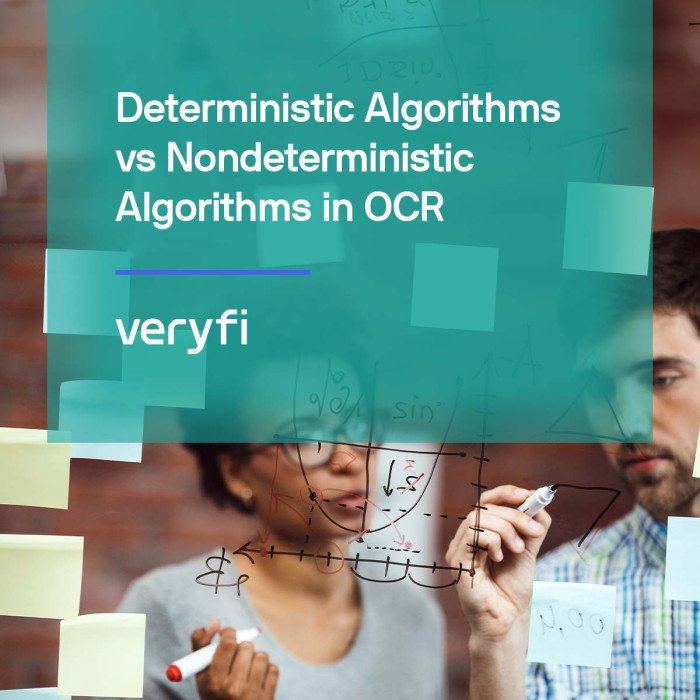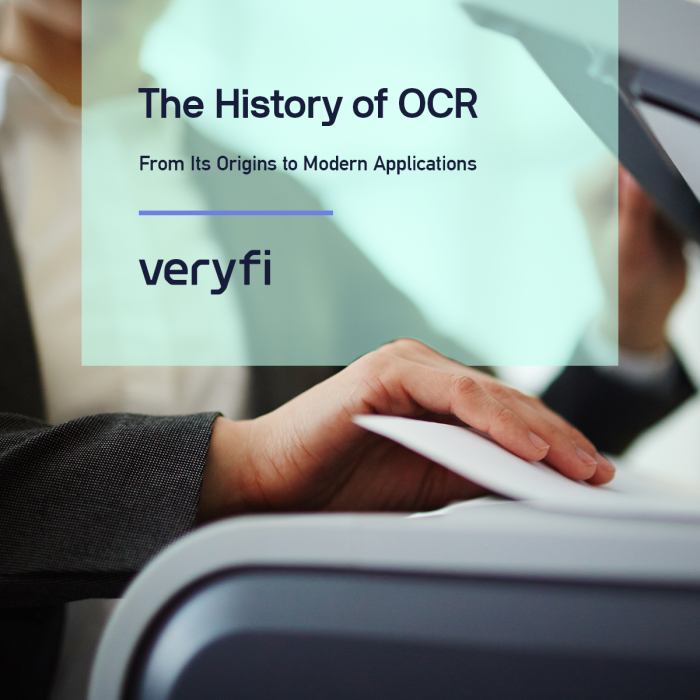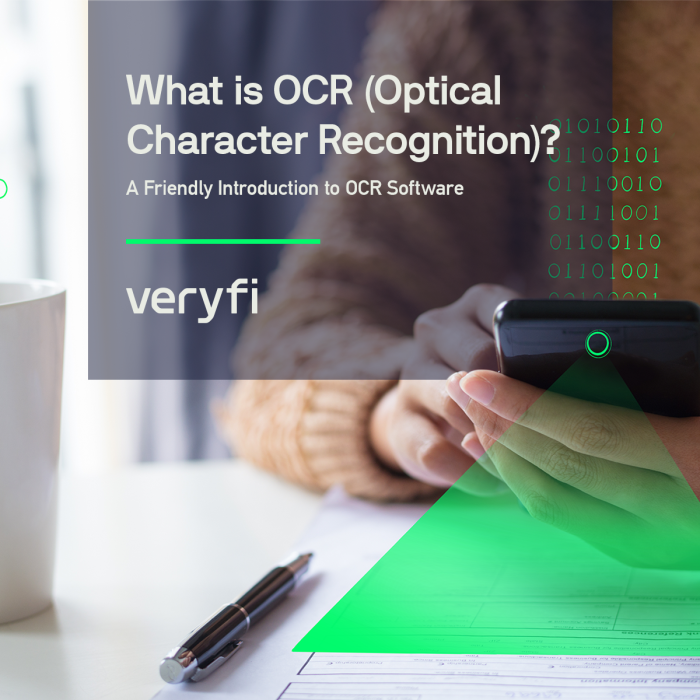Learn How it Works and its Benefits Across Industries
Japanese OCR technology has come a long way in recent years, making it easier than ever before to accurately recognize and process Japanese text. This article will dive into how this innovative technology works, as well as its benefits and applications in various industries.
Understanding Japanese OCR Technology
Before we dive into what makes Japanese OCR technology so unique, let’s first define what OCR is and how it works. OCR (Optical Character Recognition) is a technology that enables computers to convert images of handwritten or printed text into machine-readable text. This is achieved through the use of complex algorithms that analyze the image and attempt to recognize each character in it.
OCR technology has revolutionized the way organizations process large volumes of text. Instead of manually transcribing text, which is time-consuming and prone to errors, OCR technology enables organizations to quickly and accurately convert text into digital format.
What is OCR and How Does it Work?
OCR technology works by analyzing each individual character of an image and attempting to recognize it based on its shape and other similar characteristics. This is accomplished through the use of sophisticated algorithms that have been trained on large datasets of text. These algorithms can recognize not only standard printed text but also handwriting and stylized fonts.
Spanning the long history of OCR, the technology has come a long way since its inception. Early OCR systems were often inaccurate and could only recognize a limited range of fonts. However, advances in machine learning and artificial intelligence have enabled OCR systems to become much more accurate and versatile.
Despite these advances, OCR isn’t perfect. There are many challenges to accurately recognizing text, including variations in handwriting, font styles, and image quality. Nevertheless, it’s an indispensable tool for organizations that need to process large volumes of text quickly and efficiently.
Unique Challenges of Japanese OCR
Japanese OCR technology presents a unique set of challenges due to the complex nature of Japanese writing. Unlike in Western languages, which primarily use alphabets, Japanese consists of three writing systems: Kanji, Hiragana, and Katakana. Kanji are complex characters that represent entire words or concepts, while hiragana and katakana are simpler scripts used to represent sounds and suffixes.
Recognizing these different scripts accurately requires a much more advanced OCR system than those that are used for Western languages. Additionally, the complexity of Japanese fonts can also pose a challenge, requiring OCR systems to be able to recognize and interpret subtle differences in character shapes and styles.
Despite these challenges, Japanese OCR technology has made incredible strides in recent years. Thanks to advances in machine learning and artificial intelligence, OCR systems can now accurately recognize all three Japanese writing systems and can even recognize complex kanji characters.
Key Features of Japanese OCR Solutions
Some of the key features of Japanese OCR solutions include:
- Ability to recognize all three Japanese writing systems
- Accurate recognition of complex kanji characters
- Advanced font recognition capabilities
- Robust image enhancement and pre-processing features
These features make Japanese OCR technology an essential tool for any organization dealing with Japanese language content, whether that’s in the form of receipts, business documents, signage, or other media.
Another important feature of Japanese OCR solutions is their ability to handle different image types. For example, OCR systems must be able to recognize text on curved surfaces, such as street signs or product packaging. They must also be able to handle text that is printed in different colors or on complex backgrounds.
OCR technology is also being used in a variety of new applications. For example, some companies are using OCR technology to automatically generate subtitles for videos or to extract text from social media posts. This is just the beginning of what OCR technology can do, and we can expect to see many more innovative applications in the years to come.
Evolution of Japanese OCR Technology
Japanese OCR technology has come a long way since its early days. Let’s take a closer look at how this technology has evolved to become the powerful tool that it is today.
Early OCR Systems in Japan
The earliest OCR systems in Japan were developed in the 1970s and were primarily used to recognize printed text. These systems were relatively limited in their capabilities, with accuracy rates of around 50 to 60 percent.
Despite their limitations, early OCR systems were still a significant improvement over manual data entry, which was time-consuming and prone to errors. As a result, they were widely adopted by businesses and organizations that needed to process large volumes of printed text, such as banks, insurance companies, and government agencies.
However, early OCR systems were not without their challenges. For example, they struggled to recognize text that was printed in unusual fonts or layouts, or text that was smudged or distorted. As a result, accuracy rates were often lower than desired, which could lead to errors and delays in processing.
Over time, however, OCR technology continued to improve, with the introduction of more powerful algorithms and image processing techniques. This led to significant improvements in accuracy rates, with modern OCR systems sometimes boasting rates of over 99 percent.
Advances in Machine Learning and AI
One of the most significant advances in OCR technology has been the introduction of machine learning and AI techniques. These approaches allow OCR systems to learn from vast amounts of data, making them much more accurate and efficient.
Machine learning and AI can also enable OCR systems to recognize Japanese handwriting, something that was previously thought to be impossible. This breakthrough has opened up new possibilities for OCR technology, making it even more valuable for business, research, and accessibility purposes.
For example, OCR technology can be used to digitize historical documents that were written by hand, making them accessible to a wider audience. It can also be used to create searchable databases of handwritten notes and records, which can be incredibly useful for genealogical research and other historical studies.
Current State of Japanese OCR Technology
Today, Japanese OCR technology is incredibly advanced and has a wide range of applications across different industries. From expense management to loyalty applications to document processing to translation services, Japanese OCR is an indispensable tool for processing large volumes of text quickly and efficiently.
In the healthcare industry, OCR technology is used to digitize patient records and other medical documents, making it easier for healthcare providers to access and share information. In the legal industry, OCR technology is used to scan and analyze legal documents, helping lawyers to research cases more efficiently.
Overall, the evolution of Japanese OCR technology has been remarkable, with significant improvements in accuracy, speed, and functionality. As OCR technology continues to advance, it is likely to become even more valuable and transformative, opening up new possibilities for businesses, researchers, and individuals around the world.
Applications of Japanese OCR Technology
Optical Character Recognition (OCR) technology has revolutionized the way we handle paper documents and written text. OCR technology uses machine learning algorithms to recognize and digitize printed or handwritten text, making it easier to search, edit, and store.
So, how exactly is Japanese OCR being used today? Let’s take a closer look at some of its most valuable applications.
Business and Document Management
One of the most significant applications of Japanese OCR technology is in business and document management. OCR can be used to scan and archive paper documents, making them easily searchable and accessible. This can save businesses a significant amount of time and money, as they no longer need to spend hours manually sorting and categorizing documents.
Additionally, OCR can be used to automatically extract key data from documents, such as invoice amounts, purchase orders, and customer information. This not only saves time but also reduces the risk of errors that can occur during manual data entry.
Translation and Language Services
Another valuable application of Japanese OCR technology is in translation and language services. This technology can be used to quickly and accurately translate Japanese documents into other languages. The OCR software can recognize the text and convert it into editable digital text, which can then be translated using machine translation tools or by human translators.
OCR can also be used to automatically transcribe audio and video content, making it easier for non-native Japanese speakers to understand. Additionally, OCR can be used to create subtitles or closed captions for Japanese-language media, making it accessible to a wider audience.
Education and Research
Japanese OCR technology is also valuable for education and research purposes. It can be used to scan and digitize historical texts and documents, making them more easily accessible to researchers. This can help preserve important cultural heritage and make it available to a wider audience.
OCR can also be used to create searchable databases of research publications, enabling researchers to quickly find the information they need. This can save researchers a significant amount of time and effort, as they no longer need to manually search through hundreds of pages of text to find the information they need.
Accessibility for the Visually Impaired
Finally, Japanese OCR technology is an important tool for accessibility purposes. OCR can be used to transcribe text into audio formats or convert it into braille, making it easier for individuals with visual impairments to access written content. This can help promote inclusivity and equal access to information for all individuals, regardless of their physical abilities.
In conclusion, Japanese OCR technology has a wide range of applications in various fields, from business and document management to education, research, and accessibility. As the technology continues to evolve and improve, we can expect to see even more innovative uses for OCR in the future.
Top Japanese OCR Software and Tools
Along with dozens of other languages, Veryfi OCR API Platform and Veryfi Lens support handwritten and printed Japanese text. All three Japanese writing systems are supported by Veryfi.
During a meeting with a Japanese business partner, one of our co-founders Ernest Semerda amazed the attendees by providing a live, unscripted demo of Veryfi Lens with a printed receipt in Japanese. Watch this short demo capturing the moment:
Online OCR services like Veryfi use cloud-based technology to convert scanned images or PDFs into searchable and editable text. However, it should be noted that other online OCR services may have privacy and security concerns and don’t offer the Day 1 Accuracy™ of the Veryfi AI-based OCR.
Conclusion
Japanese OCR technology is an incredibly powerful tool that is revolutionizing the way we process and analyze text. With its ability to recognize all three Japanese writing systems and advanced font recognition capabilities, it’s an indispensable tool for businesses, researchers, and language service providers alike. Whether you’re looking to improve your expense management software or loyalty app, accelerate document processing, translate Japanese content into other languages, or create accessible content for individuals with visual impairments, Japanese OCR technology has something to offer.
Experience Day 1 Accuracy™ with Japanese text with our free web demo below. Additionally, sign up for a free account to explore further and see how our technology accelerates time to value. Unlock the full potential of OCR for Japanese text and elevate your company’s productivity today!










